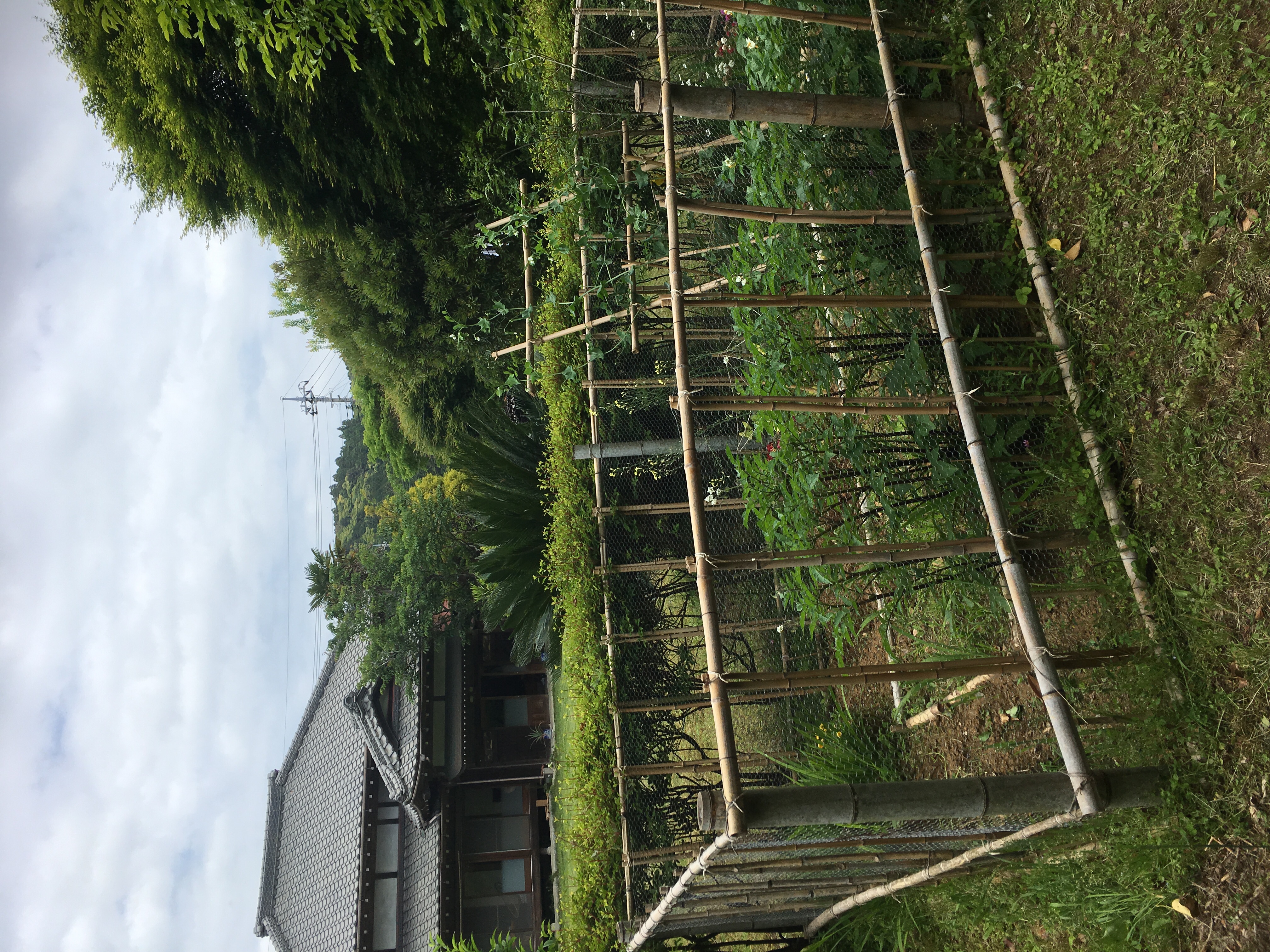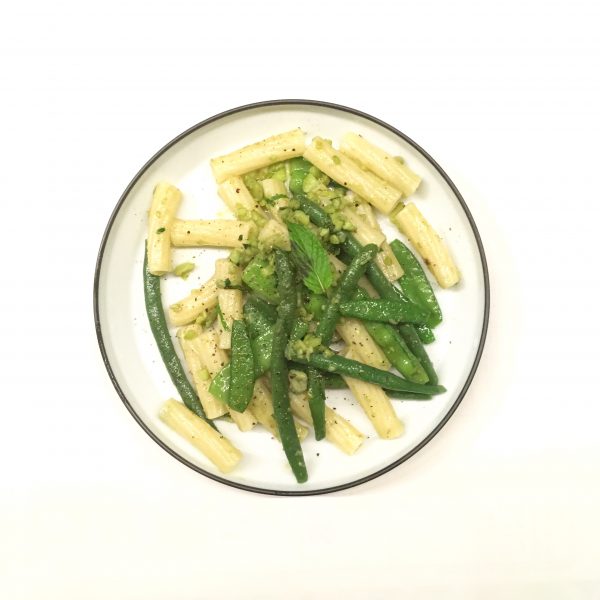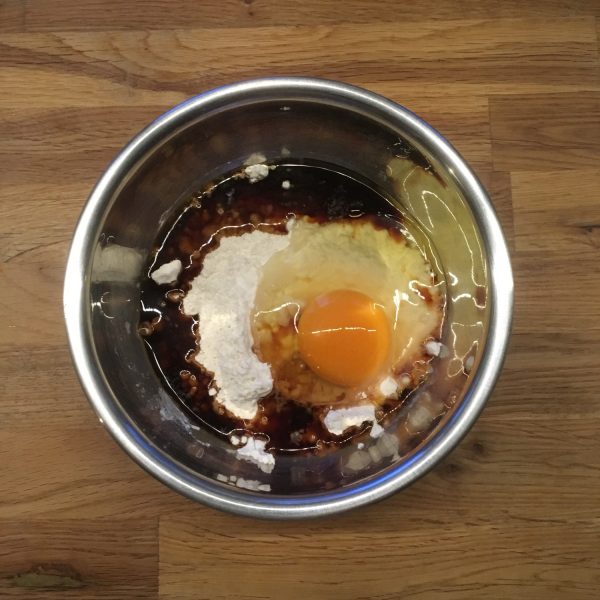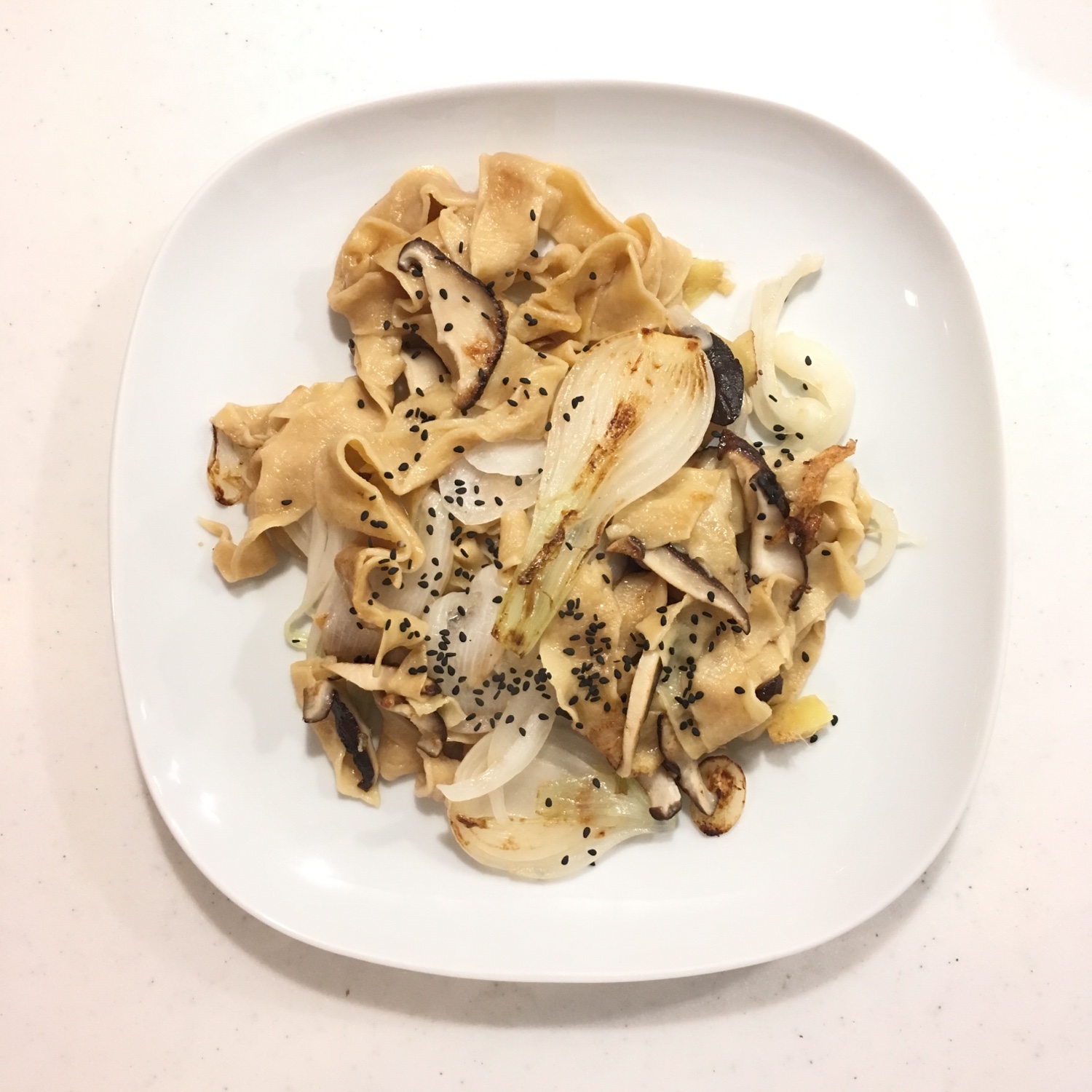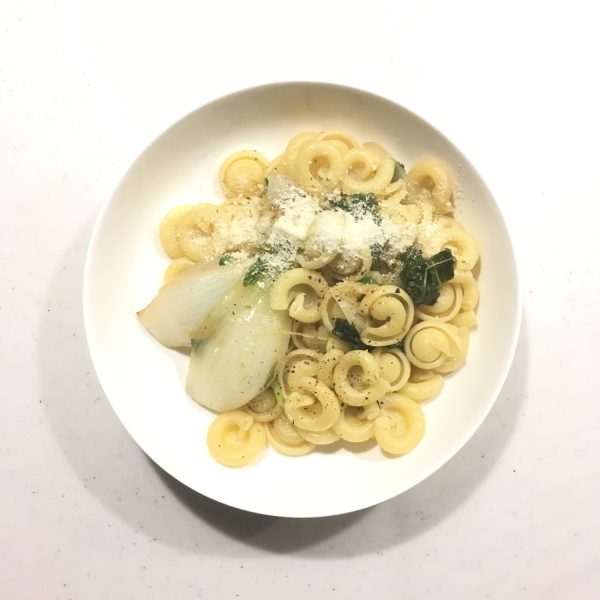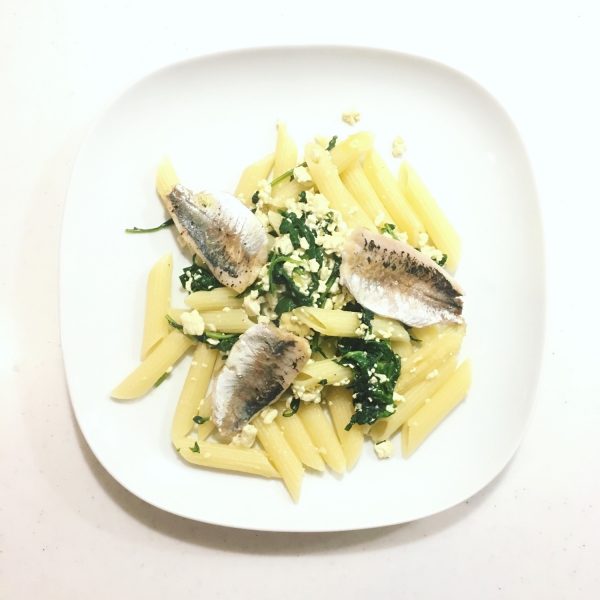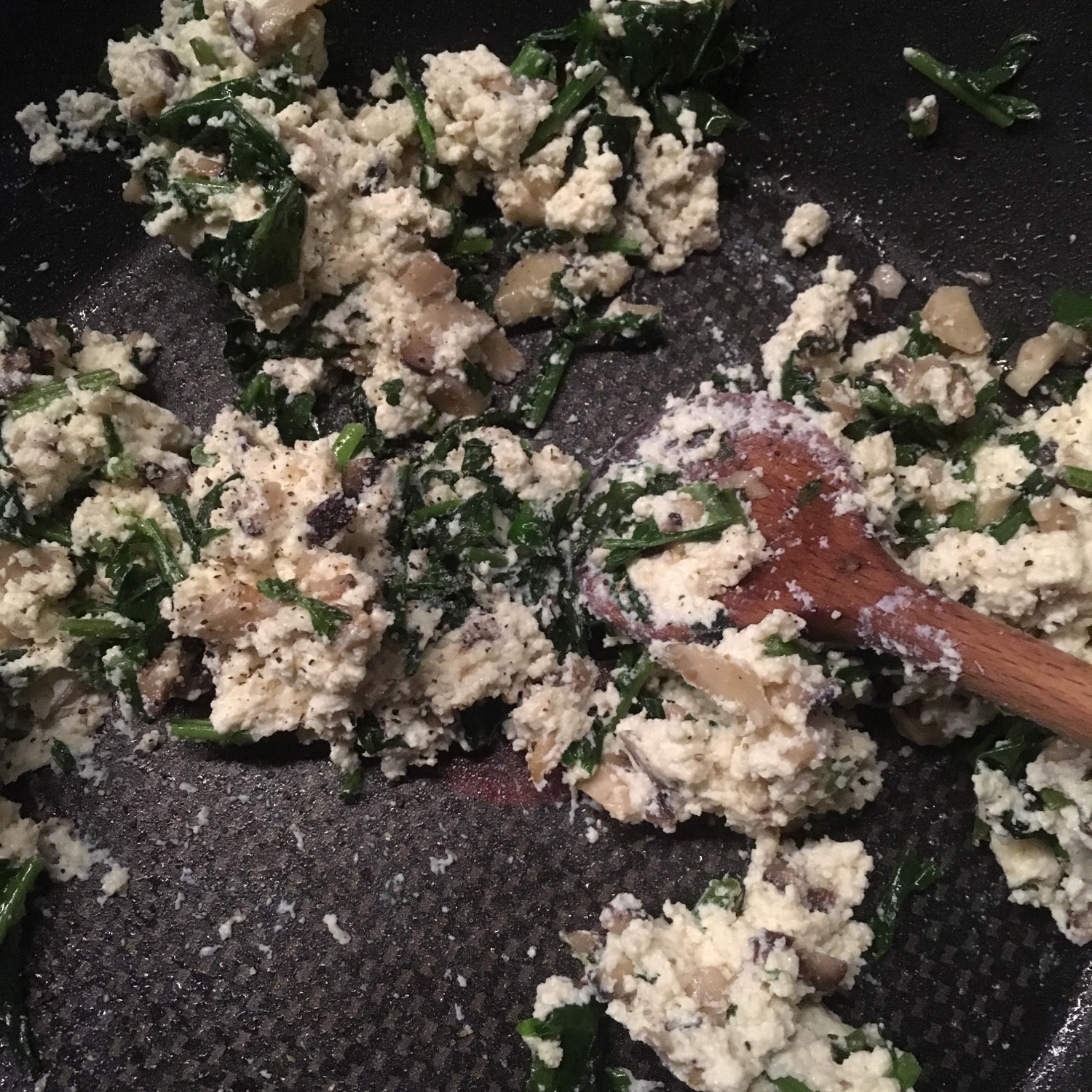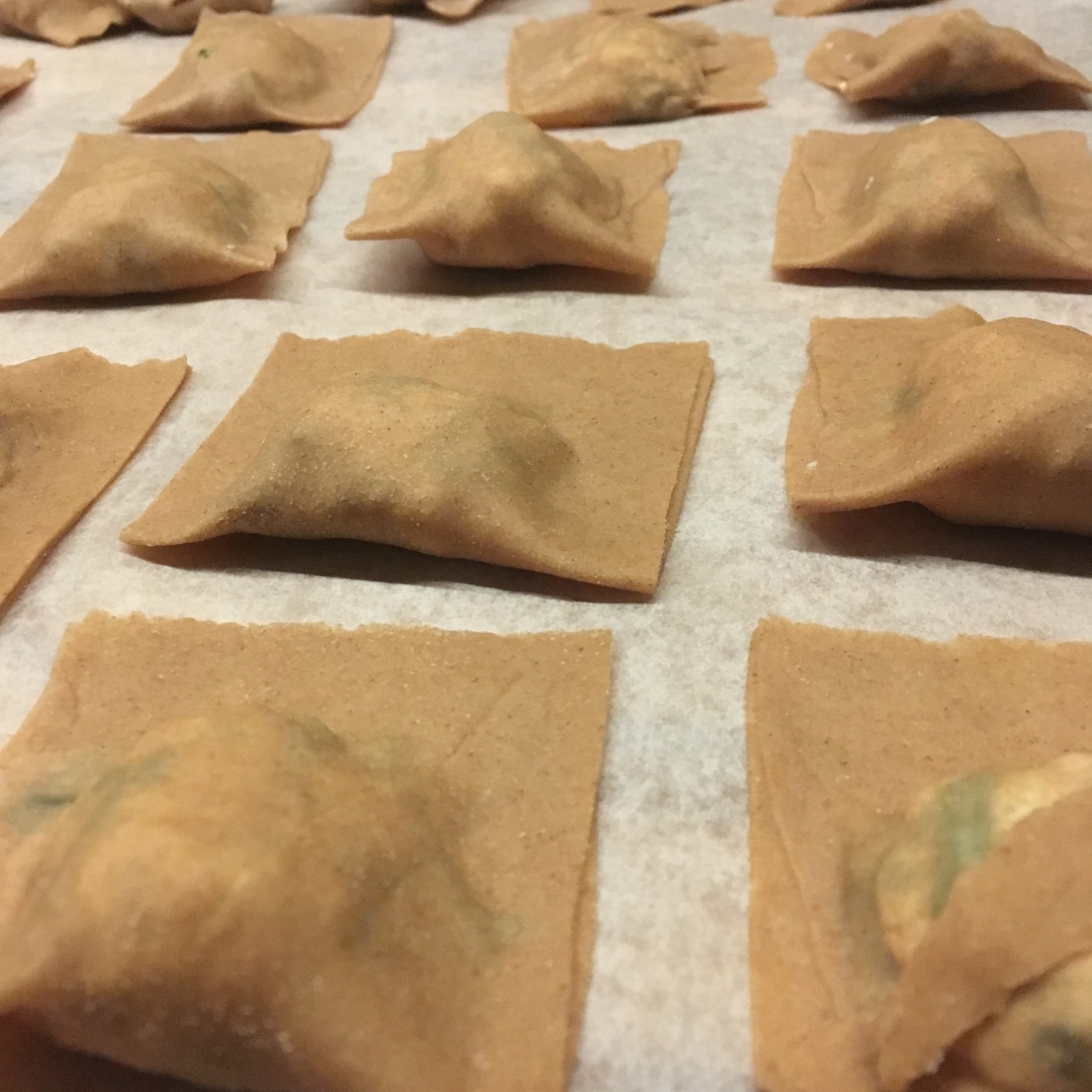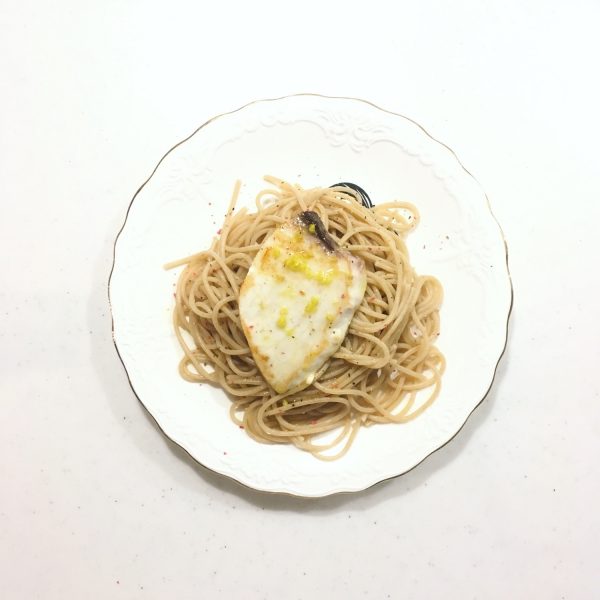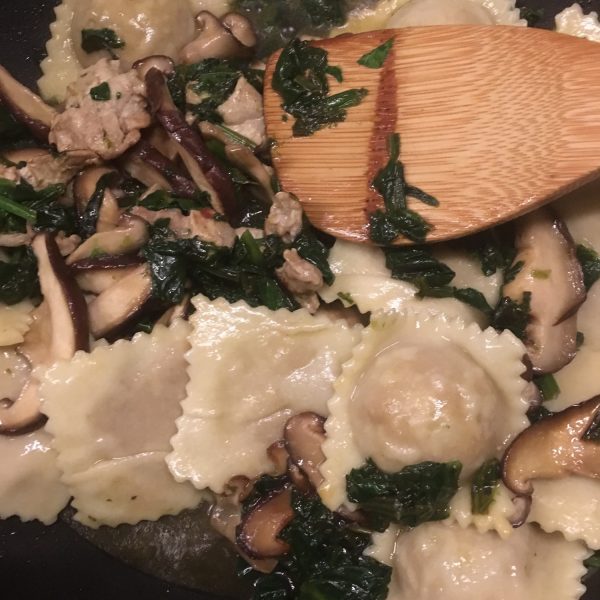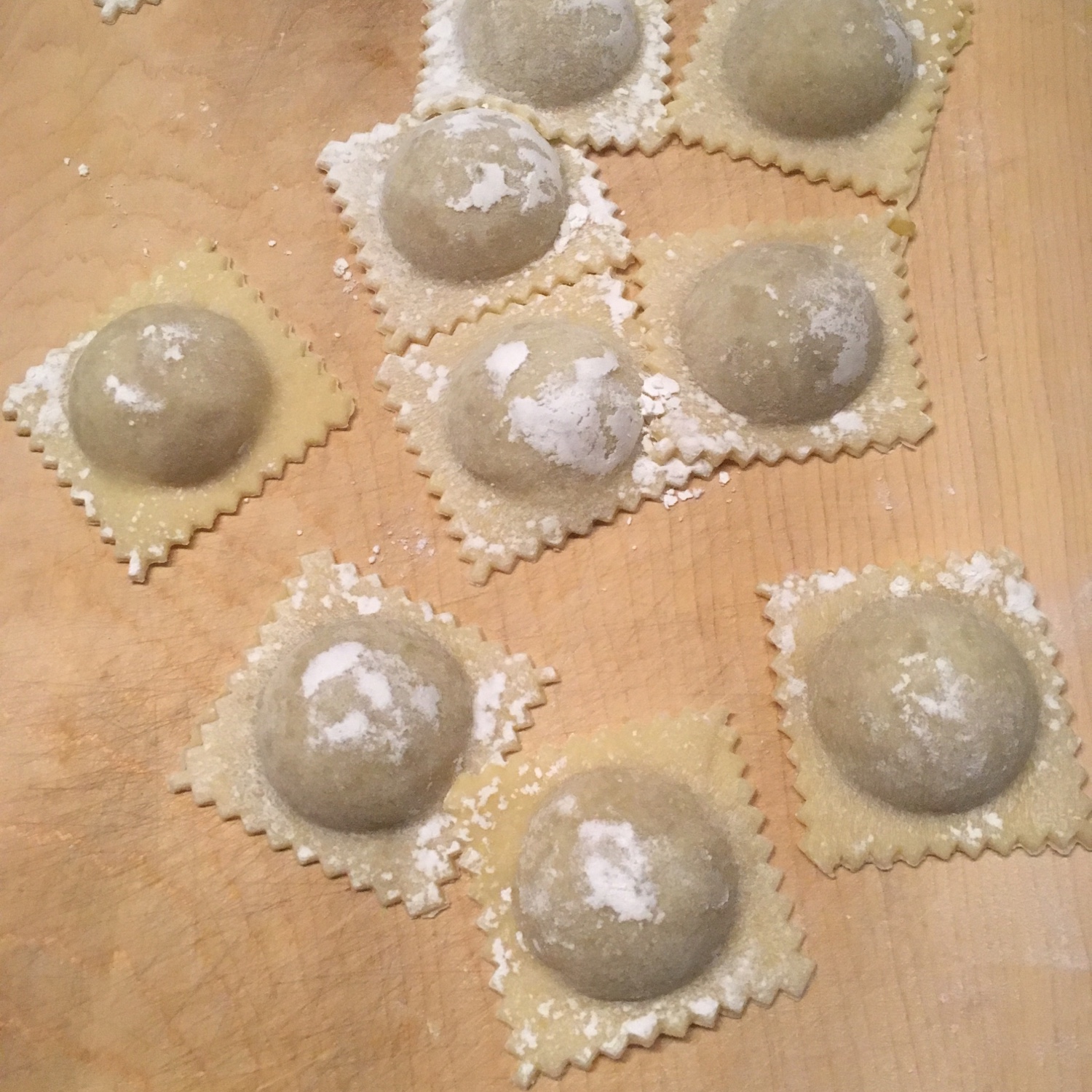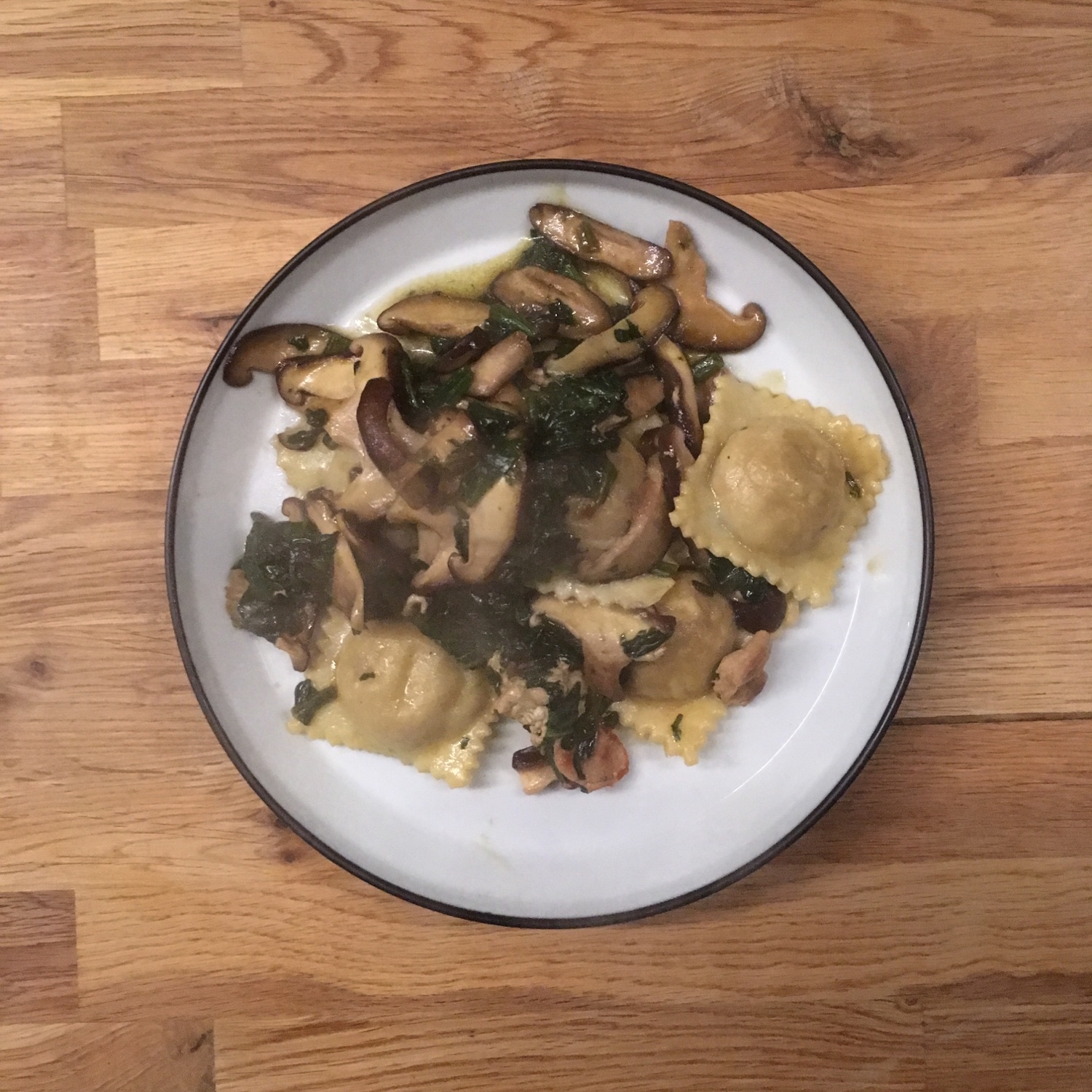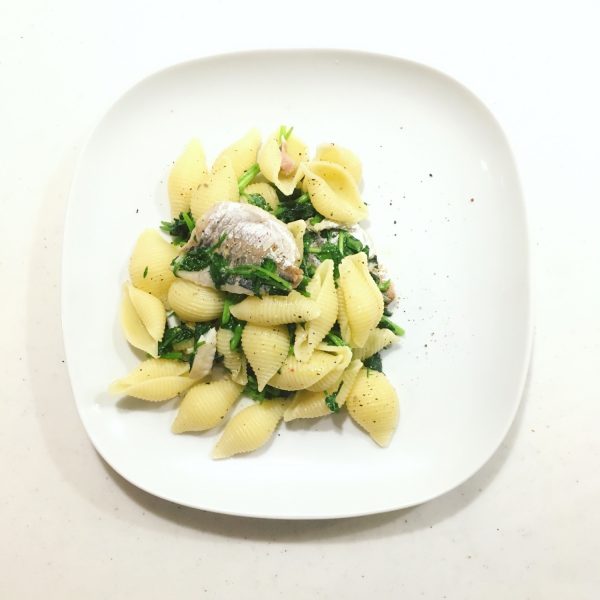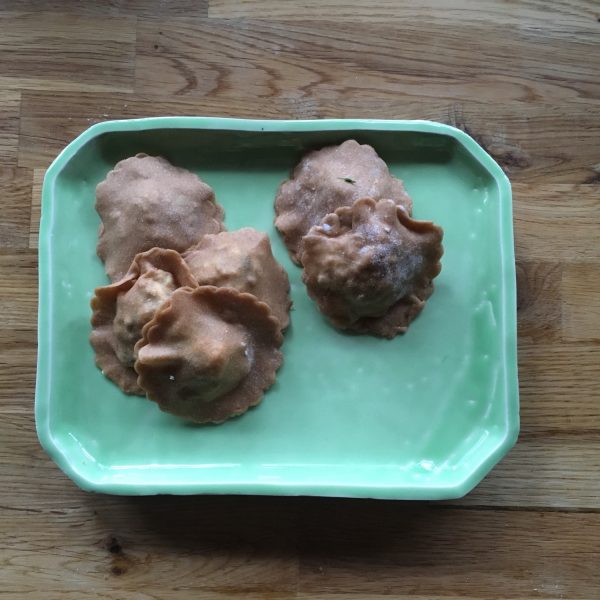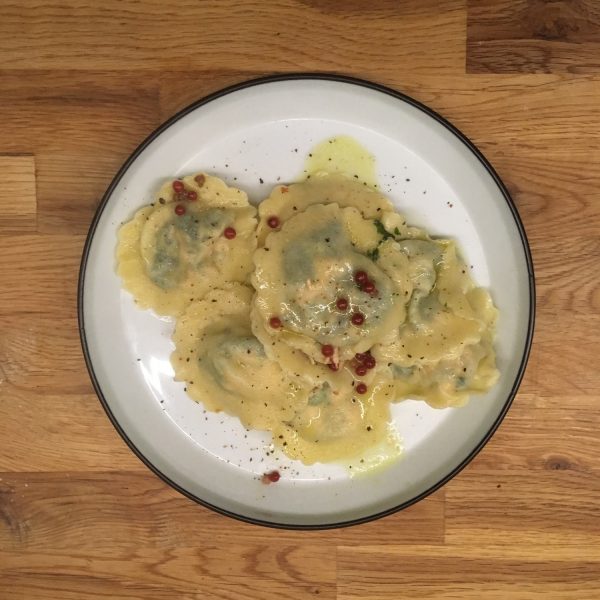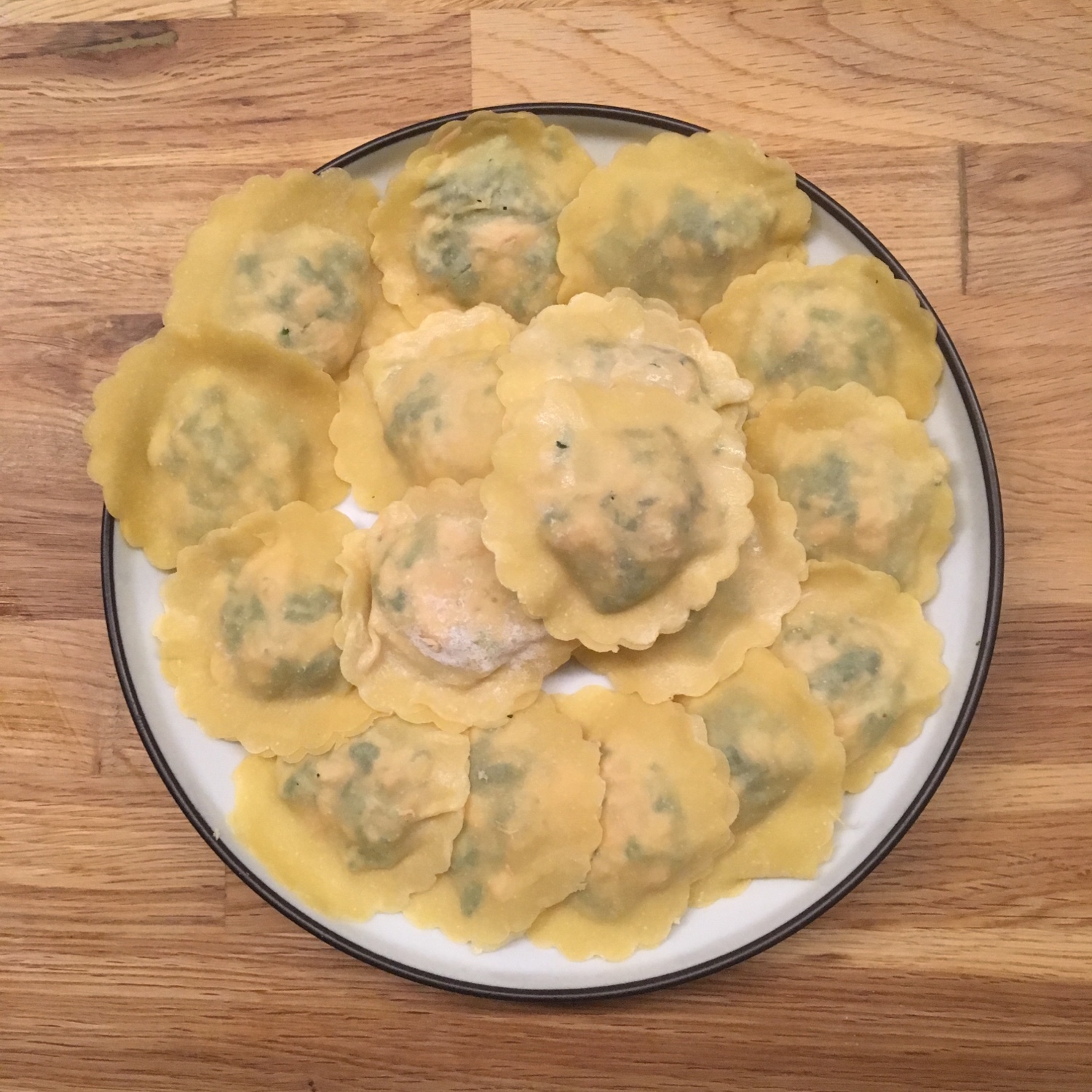My kitchen garden seems to be doing ok! Every week I harvest something, and recently it’s been focused on snap peas and herbs. Two plants of peas actually have been producing a handful of snap peas every week, which is just the perfect amount for us so far, as I used them mixed with other vegetables. The mint and coriander are doing good and I’ve harvesting quite some too for daily use, same with some kind of salads my neighbor gave me (we exchange crops). I like the idea to just walk down in the garden and pick what is needed for preparing a meal. I’ve also checked that potatoes are coming, though I am worried the soil may be too rich… we’ll see… it’s not easy to be a beginner gardener and not to be able to check every day!!! I’ll learn from my mistakes and successes I guess and do better next year!
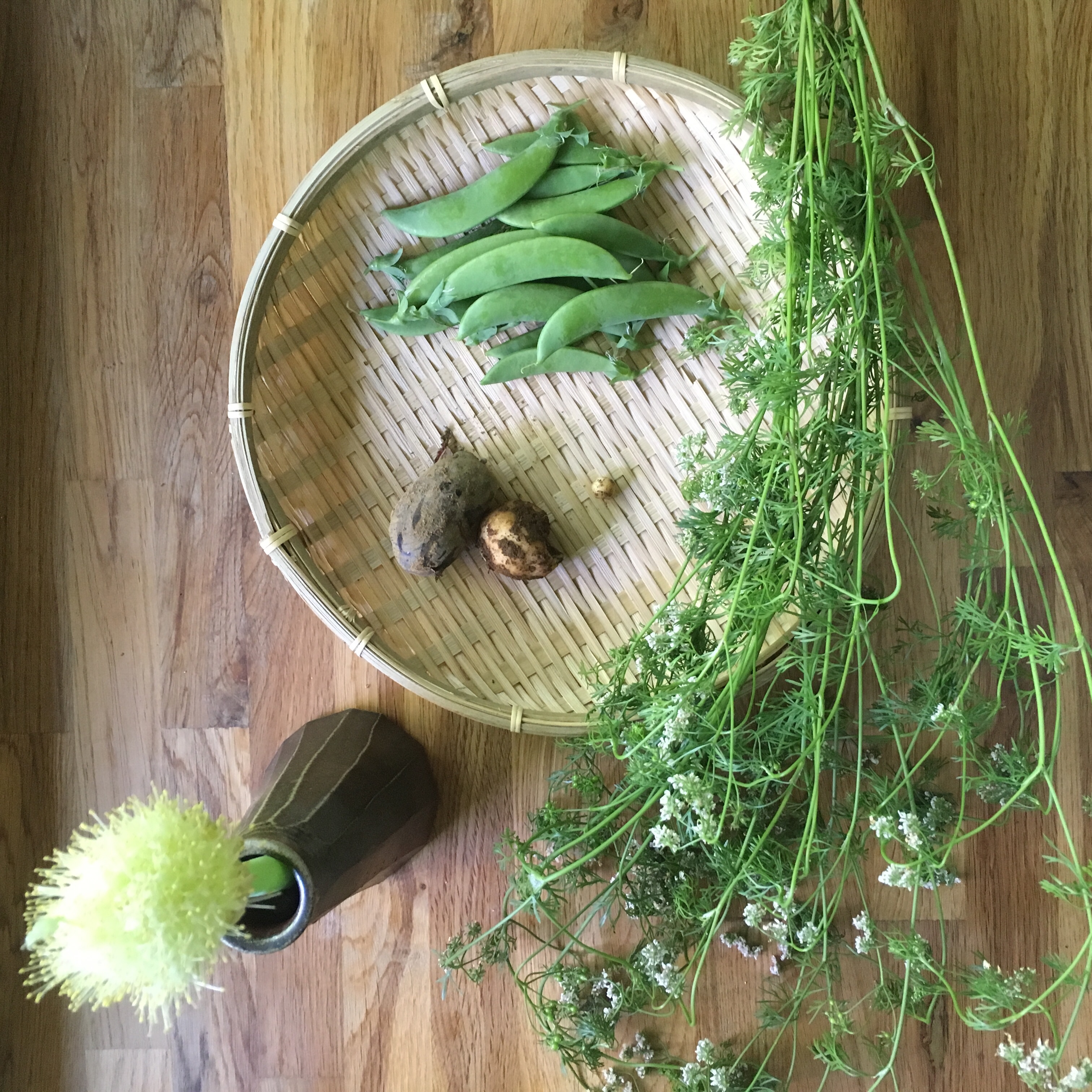
With all this greens, not only from my kitchen garden but also from the farmers market I was thinking of new recipes and inspired by Giula’s zucchini and saffron pasta recipe (that was super delicious) I prepared a fava beans and greens pasta sauce. The kind that is so delicious that you want more!!! Here’s my recipe.
Fava beans pasta (for two servings)
– 125g of dry penne or macaroni or some similar pasta
– a handful of fresh fave beans shelled
– a handful of fresh snap peas
– a handful of green beans
– a handful of shelled greens peas if you have some (I couldn’t wait and already had eaten up all mine!!)
– 5-10 leaves of fresh mint
– olive oil, salt and pepper
Boil the pasta. When al dente drain and keep.
In the meantime, blanche the fava beans and peel them. Blanche the green beans, the green beans and the snap peas. Puree the fava beans, add olive oil generously, salt and pepper. In a large pan at low heat, heat the fava beans purée and then add the pasta, and the other vegetables, stir well, add the mint washed and chopped. Serve and eat immediately!!
Have a great week!!
